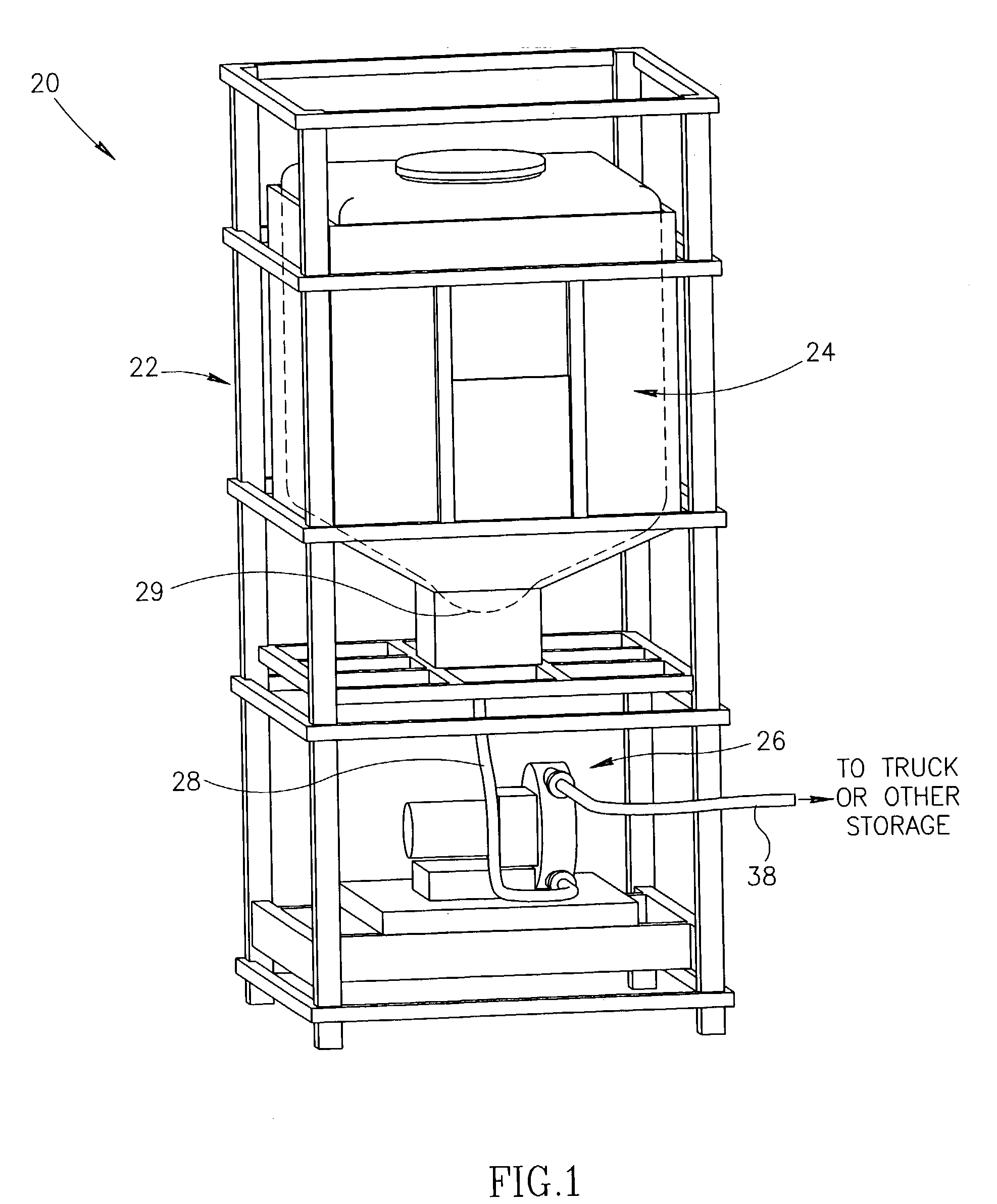Fiber gel mixture for use in cementicious products
a technology of fiber gel and cement, which is applied in the direction of climate sustainability, solid waste management, sustainable waste treatment, etc., can solve the problems of not being able to verify whether the proper number of bags were added to the cement mixture, the method for adding fibers is not automated, and the replacement method is not available. , to achieve the effect of reducing the possibility of human error and maximizing the fiber composition
- Summary
- Abstract
- Description
- Claims
- Application Information
AI Technical Summary
Benefits of technology
Problems solved by technology
Method used
Image
Examples
example 1
[0030] A cement mixture was prepared for use in comparing a cured cement product with a cement product having fibers added thereto.
[0031] The below list describes the starting materials, equipment, and characteristics:
1 Mix ID No. 1 Description: 5 Sack Mix W / C ratio: 0.64 Strength (fc): N / A psi Sack Content: 5.00 sk. Slump: 4 inch Gal / sk.: 7.20 Max. Size of Agg.: 1 inch Un. Wt.: 146.3
[0032] As can be seen, the process started with 5.00 sacks or 470 pounds of cementicious material mixed with 7.2 gallons of water per sack or 36 gallons of water. All procedures outlined in ASTM C31 were used to place the cement in molds. This was a standard mix, regardless of whether fibers were added.
[0033] A cement composition was formed. The following list describes the constituents added to the mixture used to form the cement:
2 Batch % Sp. Contents Wt. Used Gr. Volume Cement 400 85 3.15 2.04 Fly Ash-Class F 70 15 2.33 0.48 Sand 1581 50 2.62 9.67 1" .times. #4 1247 39 2.65 7.54 3 / 8" .times. #8 352 1...
example 2
[0037] A cement mixture was prepared for use in comparing a cured cement product with a cement product having fibers added thereto.
[0038] The below list describes the starting materials, equipment, and characteristics:
4 Mix I.D. No. 2 Description: 5 Sack Mix Strength (fc): N / A psi W / C ratio: 0.64 Slump: 4 inch Sack Content: 5.00 sk. Max. Size of Agg.: 1 inch Gal / sk.: 7.20 Un. Wt.: 146.3
[0039] As can be seen, the process started with 5.00 sacks or 470 pounds of cementicious material mixed with 7.2 gallons of water per sack or 36 gallons of water. All procedures outlined in ASTM C31 were used to place the cement in molds. This was a standard mix, regardless of whether fibers were added.
[0040] A cement composition was formed. The following list describes the constituents added to the mixture used to form the cement:
5 Batch Sp. Vol-Contents Wt. % Used Gr. ume Cement 400 85 3.15 2.04 Fly Ash-Class F 70 15 2.33 0.48 Sand 1581 50 2.62 9.67 1" .times. #4 1247 39 2.65 7.54 3 / 8" .times. #8 35...
example 3
[0044] A cement mixture was prepared for use in comparing a cured cement product with a cement product having fibers added thereto.
[0045] The below list describes the starting materials, equipment, and characteristics:
7 Mix I.D. No. 3 Project: Contractor: Description: 2000 psi Pump Mix Strength (fc): 2000 psi W / C ratio: 0.68 Slump: 4 inch Sack Content: 5.50 sk. Max. Size of Agg.: 3 / 8 inch Gal / sk.: 7.64 Un. Wt.: 143.2
[0046] As can be seen, the process started with 5.50 sacks or 517 pounds of cementicious material mixed with 7.64 gallons of water per sack or 42.02 gallons of water. All procedures outlined in ASTM C31 were used to place the cement in molds. This was a standard mix, regardless of whether fibers were added.
[0047] A cement composition was formed and poured into a mold. The following list describes the constituents added to the mixture used to form the cement:
8 Batch Sp. Vol-Contents Wt. % Used Gr. ume Cement 439 85 3.15 2.23 Fly Ash-Class F 78 15 2.33 0.54 Sand 2093 70 2....
PUM
| Property | Measurement | Unit |
|---|---|---|
| length | aaaaa | aaaaa |
| length | aaaaa | aaaaa |
| length | aaaaa | aaaaa |
Abstract
Description
Claims
Application Information
 Login to View More
Login to View More - R&D
- Intellectual Property
- Life Sciences
- Materials
- Tech Scout
- Unparalleled Data Quality
- Higher Quality Content
- 60% Fewer Hallucinations
Browse by: Latest US Patents, China's latest patents, Technical Efficacy Thesaurus, Application Domain, Technology Topic, Popular Technical Reports.
© 2025 PatSnap. All rights reserved.Legal|Privacy policy|Modern Slavery Act Transparency Statement|Sitemap|About US| Contact US: help@patsnap.com


